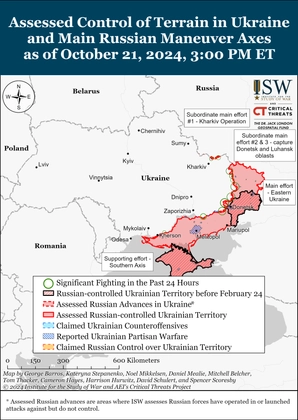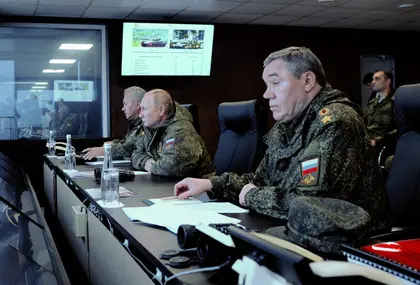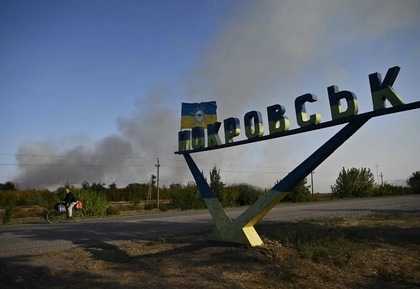Recent expert intelligence points to the Kremlin preparing for a long-term war against Ukraine.
According to the Institute for the Study of War (ISW), the Kremlin is now undertaking an expanded regime of personnel mobilization, reorganization and industrial actions it should have taken before launching its invasion of Ukraine in February 2022. Signs suggest that the Russian Federation is taking steps to conduct the "special military operation" as a major conventional war.
JOIN US ON TELEGRAM
Follow our coverage of the war on the @Kyivpost_official.
On Jan. 16, Ukrainian military intelligence representative Andriy Yusov stated on television that Russia's preparation for a long-term war means that the enemy understands that the idea of capturing Ukraine quickly is unfeasible. Therefore, Russian President Vladimir Putin is now considering a long-term war.
"This concept of the so-called ‘special military operation,’ which is, in fact, a brutal invasion of the territory of Ukraine, was as follows: Putin planned that it should be quick…[That] did not work out," Yusov said.
He noted that a long-term war of attrition was not originally part of Putin's plan, but in recent months, the Russian Federation has needed to switch to a war footing and to press society into the mindset that "war is long-term."
Mobilization
Russia plans to create a two-million-person army, Ukrainian military intelligence says. The Russian command may announce the mobilization of another 500,000 men in the coming days, including residents of Moscow and St Petersburg. This would allow it to create strategic reserves, Ukrainian military intelligence believes. Such a move would build on the autumn 2022 wave of partial mobilization, which saw the Kremlin put at least 300,000 Russians under arms.

ISW Russian Offensive Campaign Assessment, October, 22, 2024
The Russian Federal Security Service has already tacitly banned all conscripts from leaving the country, while lists of recruits have been prepared in occupied Crimea, while a moratorium has been lifted for fathers with three children in Russia.
In December, Russian Defense Minister Sergei Shoigu, in the presence of Putin, proposed to gradually increase the draft age from 18 to 21 years and the upper limit to 30.
On Jan. 11, chairman of the State Duma Defense Committee, Andrey Kartapolov, explained that citizens under 30 will be drafted in the spring. The next day, Kremlin spokesman Dmitry Peskov said, "Putin 'conceptually' supported raising the draft age to 30".
Preparation of the Russian military-industrial complex
Since August, according to military intelligence, Russia has already transferred its military-industrial complex to a state of intensified work.
Since December, Putin has held several senior meetings and visited defense enterprises in Russia, ISW reports. The Russian president has publicly acknowledged issues with supplies, such as the lack of reconnaissance drones, and notably demanded state defense procurement contracts in a shorter-than-planned time frame.
On Dec. 8, National Security and Defense Council of Ukraine Secretary Oleksiy Danilov said that Russia plans to deploy its own production of kamikaze drones in Togliatti, Russia. According to him, there is an agreement between Moscow and Tehran on the production of kamikaze drones in Russia.
Increasing military expenditure in Russia's budget
Russia's spending on the war against Ukraine is set to increase dramatically in 2023. Russia is planning to spend almost a third of its budget on military needs in the coming year, Britain’s Ministry of Defense reported in December.
On Dec. 5, Russia’s 2023 federal budget law, signed by Putin, puts spending on the army, special services, and police in excess of 9 trillion rubles ($143 billion). The amount is significantly higher than in previous years and accounts for more than 30 percent of Russia's total budget, according to Britain’s Ministry of Defense in its daily review on Dec. 11.
At the end of November, Shoigu said that the funding for the state defense order would increase almost one and a half times in 2023, although exact amounts were not specified.
The Ukrainian edition of Forbes concluded that, in the nine months since the invasion of Ukraine, Russia has spent $82 billion on the war - a quarter of its annual budget revenues.
Kremlin intensifies propaganda to support the concept of long-term war
Recently, the Kremlin has been shaping the media space to revive support for the invasion by reintroducing narratives used before Feb. 24 and taking steps to regain control over war coverage, ISW analysts have observed.
For example, experts note that, in late 2022, Kremlin officials resumed spreading the false narrative that the existence of an independent Ukraine threatens Russian sovereignty and culture, justifying the Russian invasion and continued Russian casualties with inevitable and necessary measures of "self-defense."
In addition, Kremlin propagandists have also stepped-up narratives about the international legal consequences awaiting Russia if it fails to win the war, which is likely to generate fear of defeat and encourage a renewed commitment to war.
In December, top Kremlin propagandist Vladimir Solovyov admitted that the war would be protracted, which means, in his view, that the term of conscription in the Russian army should be increased.
"You have to understand that the war is going to be a long one… The period of service must be increased. It makes no sense for people trained for a year to go to civilian service afterward while the country is at war,” Solovyov said.
You can also highlight the text and press Ctrl + Enter






